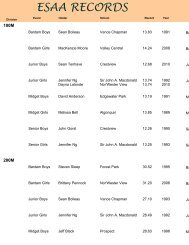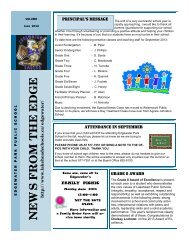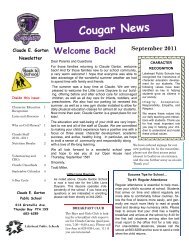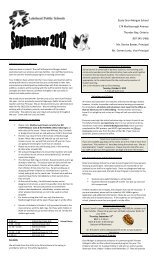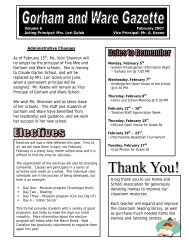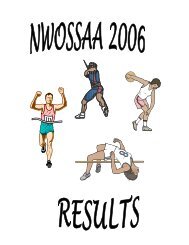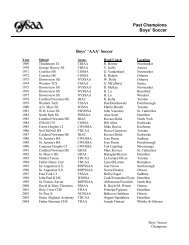Solving Friction Problems 4.3 - Lakehead Public Schools
Solving Friction Problems 4.3 - Lakehead Public Schools
Solving Friction Problems 4.3 - Lakehead Public Schools
You also want an ePaper? Increase the reach of your titles
YUMPU automatically turns print PDFs into web optimized ePapers that Google loves.
-OP11USB<br />
Practice<br />
(1st pass 7381-A)<br />
Analysis: m S 5 F S max<br />
F N<br />
Solution: F Smax 5 m SF N<br />
5 m Sm Tg<br />
5 10.222 165 kg2 19.8 m/s 2 2<br />
F Smax 5 140 N<br />
Statement: The greatest horizontal force that the adult<br />
can exert on sled 1 without moving either sled is<br />
140 N [forward].<br />
(b) Draw the FBD for sled 2 (Figure 4).<br />
F Smax Figure 4<br />
F N<br />
F g<br />
Keep in mind that sled 2 does not move, which means the<br />
net force is zero. In this case, the tension and the static<br />
friction acting on sled 2 will cancel.<br />
Given: m 5 38 kg; mS 5 0.22<br />
Required: F T<br />
Analysis: Since F T 5 F Smax , calculate F Smax using m S 5 F S max<br />
F N<br />
Solution: F Smax 5 m SF N<br />
5 m Smg<br />
5 10.222 138 kg2 19.8 m/s 2 2<br />
F Smax 5 82 N<br />
1. Two trunks sit side by side on the fl oor. The larger trunk (52 kg) is to the left of the<br />
smaller trunk (34 kg). A person pushes on the larger trunk horizontally toward the<br />
right. The coeffi cient of static friction between the trunks and the fl oor is 0.35. T/i<br />
(a) Determine the magnitude of the maximum force the person can exert without<br />
moving either trunk. [ans: 290 N]<br />
(b) Calculate the force the larger trunk exerts on the smaller trunk. [ans: 120 N [right]]<br />
(c) Would either answer change if the person pushed in the opposite direction on the<br />
smaller trunk? Explain your reasoning.<br />
2. A 4.0 kg block of wood sits on a table (Figure 5). A string is tied to the wood,<br />
running over a pulley and down to a hanging object. The greatest mass that can be<br />
hung from the string without moving the block of wood is 1.8 kg. Calculate the coeffi cient<br />
of static friction between the block of wood and the table. T/i [ans: 0.45]<br />
Figure 6 When starting a race, an<br />
athlete can achieve a greater forward<br />
acceleration by pushing backwards on<br />
starting blocks.<br />
F T<br />
Statement: The magnitude of the tension in the rope is 82 N.<br />
Static <strong>Friction</strong> and Motion<br />
It is important to understand that static friction acts on an object when the object is<br />
at rest on a surface. Th is does not mean that static friction cannot be used to make an<br />
object move. For example, when you take a step forward, the bottom of your shoe is<br />
at rest with respect to the ground. Th e foot you are standing on is not actually moving<br />
forward with the rest of your body. Th e action force is you pushing backwards on the<br />
ground. According to Newton’s third law, the ground pushes back on your foot with a<br />
force of equal magnitude but opposite in direction (the reaction force). Th is reaction<br />
force is the force of static friction, and it is this force that actually pushes you forward.<br />
Keep in mind that the force of static friction is usually greater in magnitude than<br />
the force of kinetic friction. Th is means that in a race from a standing start without<br />
starting blocks (Figure 6), you ideally want to push backwards with both feet, making<br />
sure your shoes do not slip. In the following Tutorial, we will examine the eff ect of<br />
static friction that causes an object to move.<br />
Ontario Physics 11 SB<br />
174 Chapter 4 • Applications of Forces0-17-650433-8 NEL<br />
FN C04-F013-OP11USB<br />
Figure 5<br />
4.0 kg<br />
pulley<br />
1.8 kg




